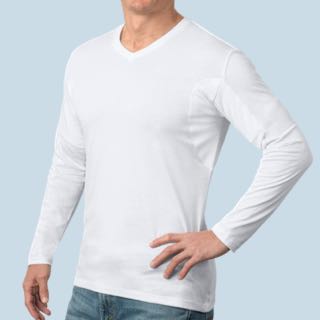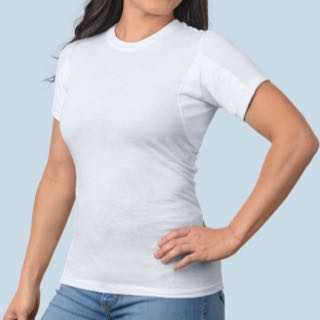How to Choose the Right Antiperspirant
For people with sweat anxiety, or anyone who deals with excessive sweat, it can sometimes feel like standard deodorants just don’t cut it. A stronger deodorant or antiperspirant, like a prescription-strength option, might be the answer, but those can be hard to find. Not to mention, reviews about them can be conflicting.
Wondering how to choose the right prescription deodorant or alternative solution that actually works?
Below, we’ll cover what makes these products different, which kinds to look for and why, how to find the best option for you and, perhaps most importantly, how to use it effectively.
What Are Prescription Antiperspirants?
The term “prescription antiperspirants” can be a bit misleading. It refers to both antiperspirants you can only get from a doctor (via an actual prescription) and over-the-counter (OTC) products that are labeled “clinical strength” or a similar formulation.
What makes these options more potent is the amount and type of aluminum compound they offer.
All antiperspirants contain aluminum chloride, the main active ingredient that reduces sweating. However, many OTC antiperspirants are also available in clinical-strength versions that offer more sweat protection than standard deodorant. For example, Secret, Gillette, Dove and Degree all offer standard and clinical-strength antiperspirants that can be found at many retail locations.
The difference is subtle but effective. For instance, the standard Secret antiperspirant contains 19 percent aluminum, while the clinical-strength version has 20 percent—the maximum the FDA allows in over-the-counter antiperspirants.
Although it sounds mild, that 1% accounts for much more sweat blocked.
Prescription antiperspirants also contain a higher percentage of aluminum chloride than their drugstore counterparts (around 25 percent). They also typically contain aluminum chloride hexahydrate, a different, stronger aluminum compound than what’s found in over-the-counter options.

How to Choose the Right Prescription Antiperspirant
Whether or not you need a prescription antiperspirant depends on how much you sweat. And, while it may seem natural to jump to the most potent option first, the right choice for you may not be the strongest in terms of aluminum.
The best way to determine your ideal solution is to start slowly. Prescription antiperspirants are more expensive, can be abrasive on your skin and require tedious, careful application compared to regular deodorant. While it can be a great solution, make sure you try the over-the-counter options first before seeking out a prescription.
However, if you’re always dealing with sweaty pits, changing your shirt multiple times a day or facing other signs of excessive sweating, it may be time to try a stronger option. Below, we provide an overview of some of the best products, organized by function and use case.
Roll-Ons and Gels for Targeted Application
These options are applied in the same general way as many other common OTC antiperspirants, but they may feature slight differences in texture (i.e., liquid) or stronger active ingredients.
Some of the most popular and effective products in this category are:
- Carpe - This is the best antiperspirant deodorant for women and men - extra effective for 72 hours for sweaty underarms with 20 percent aluminum sesquichlorohydrate. Carpe also has sweatcare products for hands, feet, face, and more
- CertainDri – This is one of the most highly rated antiperspirants available without a prescription. It rolls on in a liquid form and contains 12 percent aluminum chloride.
- ZeroSweat – Another OTC liquid application option, ZeroSweat is applied once a week.
- Drysol – This prescription-only option is on the stronger side with 20 percent aluminum chloride. It’s applied daily at first and then sparingly (i.e., once/twice a week) afterward.
- Xerac AC – This topical prescription antiperspirant works on the hands, feet, scalp and underarms. It’s applied before bed, and the application area needs to be covered after.
- Driclor – This roll-on antiperspirant contains 20 percent aluminum chloride. Doctors typically prescribe Driclor for axillary and palmoplantar hyperhidrosis (hands and feet).
For those who want a solution that’s relatively similar to the products they were using before, these roll-on options may be the best antiperspirant deodorant to stop sweating.
Sprays for Broader Coverage
Another popular application method for prescription antiperspirants is spray.
Sprays offer flexibility and are ideal for larger surface areas that can sweat excessively (e.g., the back).
Some popular, effective solutions available in spray form include:
- Odaban – This spray is used for general and axillary hyperhidrosis. While it has 20 percent aluminum chloride, it’s not as abrasive as other prescription antiperspirants.
- Formalaz – This prescription-only treatment uses formaldehyde (10%) to address pedal hyperhidrosis (excessive feet sweating), along with odors associated with foot sweat.
For some people, the actual method of application can make a huge difference in terms of effectiveness or basic adoption. After all, you need to be able to apply an antiperspirant properly for it to work.
Prescription vs. Clinical Strength: What’s the Difference?
Importantly, an antiperspirant doesn’t need to be prescribed by a doctor to be effective. Some clinical-strength options work just as well for people. What’s more, finding the best solution has as much to do with finding one that you like to use as it does with the active ingredients inside.
Roll-on and spray applications are far from the only options to consider to combat excessive sweat. For instance, SweatBlock makes antiperspirant wipes that last up to seven days, with each wipe containing 14 percent aluminum chloride. Zeasorb Absorbent Powder is also effective for foot sweat.
Ultimately, managing excessive sweat often means thinking outside of the box, trying new options and considering other solutions, like your undershirt.
How to Find the Best Antiperspirant Deodorant to Stop Sweating
When comparing prescription antiperspirants and other options, it’s important to look at the active ingredients. Target about 10%–20% aluminum chloride, erring on the side of caution (lower %) if it’s the first time you’re trying a strong antiperspirant.
You should also think about the application method. Opt for a roll-on or gel if precision matters (i.e., armpits and feet). If you’re targeting a larger mass (chest) and need more coverage, choose a spray.
Skin sensitivity is another important concern to consider. If you’ve had rashes or other adverse effects from other antiperspirants and deodorants, consider options labeled “gentle” or non-abrasive. These often contain aloe or other moisturizers, which can soothe irritated areas.
Finally, consider duration and protection. Some options are intended for 24-hour coverage and daily use, while others are designed to be applied just once per calendar week.
Remember: If you’re looking for a strong deodorant or antiperspirant solution to help you stop sweating, you don’t necessarily need a prescription from a doctor. Some OTC options work just as well. However, meeting with a doctor is certainly an option to consider, especially if OTCs haven’t been effective for you yet.
Tips for Getting the Most Out of Prescription Antiperspirants
Unlike deodorant, strong antiperspirants require careful, methodical application. In most cases, you can’t just swipe it on and go. You may need to apply it overnight or in other irregular ways.
Whether you use prescription antiperspirants or an OTC option, consider these best practices:
- Talk With Your Doctor – Depending on how much you sweat and where, your doctor may recommend a custom solution. Check in before trying any high-aluminum product.
- Follow Application Instructions Closely – Prescription antiperspirants are strong and can irritate sensitive skin if misused. Watch out for specific directions and considerations:
- Application time: Some prescription antiperspirants are applied at night.
- Frequency: Some prescription antiperspirants are applied daily at first and then weekly. Pay attention to when and why your application frequency changes.
- Prepping your pits: Clean and dry your skin before applying antiperspirant. Never swipe on prescription antiperspirant over cuts or scrapes that could get irritated.
Following these steps is as critical as finding the best antiperspirant deodorant to stop sweating.
FAQs About Prescription Antiperspirants
Before you meet with your doctor or head to the drugstore, take a look at these commonly asked questions for more information on prescription antiperspirants:
- Q: What is a prescription antiperspirant?
- A: Prescription antiperspirants are strong, sweat-blocking compounds with high amounts of aluminum chloride. They may be prescription-only or clinical-strength over-the-counter options.
- Q: Do I need a prescription antiperspirant to stop sweating?
- A: Many people who sweat excessively find that doctor-recommended antiperspirants and other strong (clinical-strength) options help them sweat less. However, other approaches can also help, like making changes to your diet and lifestyle or wearing clothes that help you sweat less.
- Q: Are prescription antiperspirants safe to use?
- A: Prescription antiperspirants are safe when used correctly. However, they’re usually stronger than their OTC counterparts and can cause irritation if not used according to your doctor’s orders and/or instructions provided by the manufacturer. Be sure to consult with your doctor if any symptoms occur.
- Q: What is the best antiperspirant deodorant to stop sweating?
- A: The best prescription antiperspirant for you depends heavily on your level of sweat, where it occurs and other factors inherent to your body. There are also logistical considerations, like how your solution is applied (roll-on, spray, etc.), along with preferential factors that determine what’s most comfortable.
Back Up Your Antiperspirant with a Thompson Tee
Alongside your antiperspirant, enjoy even more sweat protection with Thompson Tee, the only sweat proof undershirt guaranteed to protect against underarm sweat marks and stains. Our shirts are designed to minimize the amount you sweat while also quickly wicking away any sweat and moisture you do produce, ensuring all-day protection.
With built-in armpit sweat guards that completely absorb and evaporate sweat, the Thompson Tee blocks moisture from reaching your outer layers—guaranteed or your money back.



